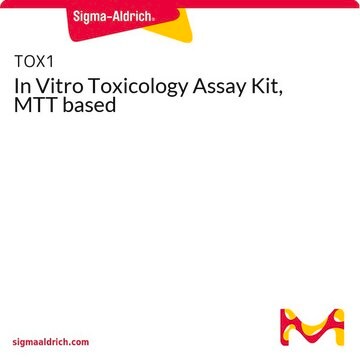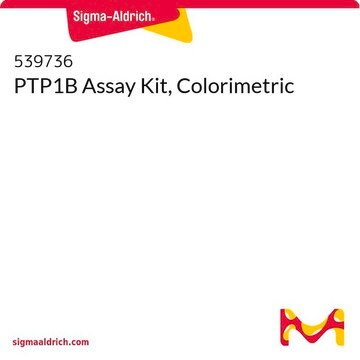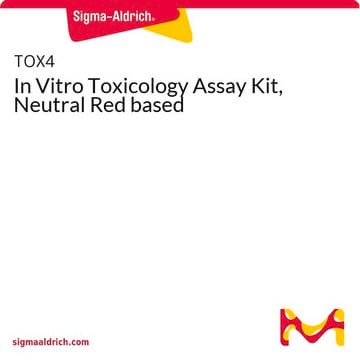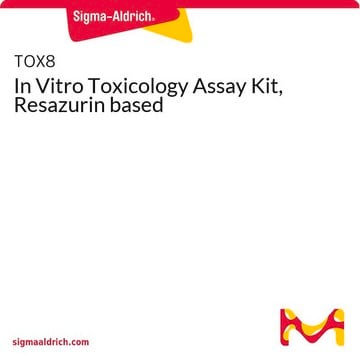MAK536
Cytotoxicity Assay Kit
sufficient for 100 assays (bioluminescent)
Iniciar sesiónpara Ver la Fijación de precios por contrato y de la organización
About This Item
Código UNSPSC:
12161503
NACRES:
NA.84
Productos recomendados
Nivel de calidad
aplicaciones
pharmaceutical
método de detección
bioluminescent
enfermedades relevantes
cancer
Condiciones de envío
wet ice
temp. de almacenamiento
−20°C
Categorías relacionadas
Descripción general
Adenosine 5′-triphosphate (ATP) is the chemical energy for cellular metabolism and is often referred to as “energy currency" of the cell. ATP is produced only in living cells during photosynthesis and cellular respiration and consumed in cellular processes including biosynthetic reactions, motility and cell division. It is a key indicator of cellular activity and has been utilized as a measure of cell viability and cytotoxicity in research and drug discovery.
Características y beneficios
- As low as 50 cells can be quantified.
- Compatible with high-throughput handling systems.
- No wash and reagent transfer steps are involved.
Idoneidad
The kit is suitable for:
- Cell proliferation: effects of cytokines, growth factor, nutrients.
- Cytotoxicity and apoptosis: evaluation of toxic compounds, anti-cancer antibodies, toxins, environmental pollutants etc.
- Drug discovery: high-throughput screening for anticancer drugs.
Principio
The Cytotoxicity Assay Kit provides a rapid method to measure intracellular ATP, cell viability, and cytotoxicity. The single working reagent lyses cells to release ATP, which, in the presence of luciferase, immediately reacts with the substrate D-luciferin to produce light. The light intensity is a direct measure of intracellular ATP concentration and hence number of living cells.
Palabra de señalización
Warning
Frases de peligro
Consejos de prudencia
Clasificaciones de peligro
Aquatic Chronic 3 - Skin Sens. 1
Código de clase de almacenamiento
10 - Combustible liquids
Clase de riesgo para el agua (WGK)
WGK 3
Certificados de análisis (COA)
Busque Certificados de análisis (COA) introduciendo el número de lote del producto. Los números de lote se encuentran en la etiqueta del producto después de las palabras «Lot» o «Batch»
¿Ya tiene este producto?
Encuentre la documentación para los productos que ha comprado recientemente en la Biblioteca de documentos.
Nuestro equipo de científicos tiene experiencia en todas las áreas de investigación: Ciencias de la vida, Ciencia de los materiales, Síntesis química, Cromatografía, Analítica y muchas otras.
Póngase en contacto con el Servicio técnico







